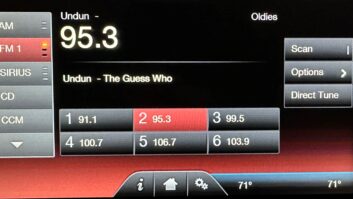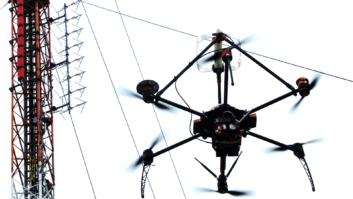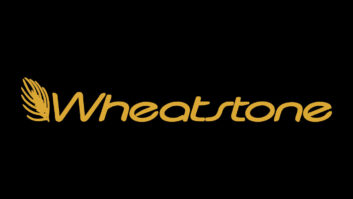In my career I have encountered only two kinds of transmitter sites.
The more typical one has a transmitter or two; a tiny workspace piled high with a collection of burned out and misfit items; a few garage-sale-quality hand tools; half a roll of paper towels; some print outs of sections of various manuals; and a half-dozen science fair projects that once were cans of pop and fast food. Often there�s no garbage can around, or it�s full if it exists. Excavating to the bottom of it would reveal much in terms of the station�s history.
At the other type, the engineer has �nested.� The site cost an additional $200 and a couple of hours more effort to stock. It has a few reasonably comfortable folding chairs and a card table to work on. There�s a mouse-proof Rubbermaid container with a selection of cans of Spam, Spaghettios, sparkling water, paper plates and clear plastic utensils. There�s another container with a cheap, light sleeping bag, air mattress and toiletries. There is a complete set of all the basic stuff from the discount tool store, and an old grill, a second-hand mini refrigerator with an integral block of ice, a $69 microwave, a coffee maker and a can of Folgers, a repurposed stereo and speakers to hear whatever over the sounds of the fans. The biggest luxury of all, if it fits, is a clean, mouse-free, comfortable-but-dated couch.
Another tough day up on Mount Watchamacallit. It�s beautiful outside, but are you comfortable if you get stuck inside? It all has to do with how you see the transmitter site.

If visiting the transmitter is the best of times � legitimate, productive away time from the station � you are probably a nester.
If you are the kind of engineer who doesn�t want to leave until it�s all over, the kind who will go to the site as the storm hits, knowing it might be a few days before they open the road to get out, there is nothing like having a nested site where you can work until you�re done, with proper hydration, sustenance and rest.
Everyone at the station thinks riding the storm out on Mount Whatchamacallit is tough, dirty work. Only you know that there just isn�t any finer moment in this world than when you keep the old girl on the air, then settle in, peeking out at today�s version of the storm of the century. It�s a sight few will see or experience.
You call home to tell the partner you�re just fine and exchange some chit chat about the day. You call the station to leave a lasting impression of courage and raw radio guts. You assure the GM that you can handle it and subtly suggest that you might be a little undervalued.
There was a day when just about any remote transmitter site had what you needed to keep your humanity when the project went on and on or the weather hemmed you in. There was a day when a transmitter site had tools and spares and jumper cables and a few good books � even if they were by Harold Ennes. There was even a day when some sites were built and stocked to survive Armageddon.
Transmitter time is sacred; it shouldn�t be frustrating, dirty, unhealthy or unduly unsafe. It should be downright uplifting and free from want. For people like us, it�s the one place where we can be in the moment, lost in thoughts, bolstered by the chord an antenna sings in the wind.
There is no better gig on this planet. I have no idea why anyone would want to make it anything less.












